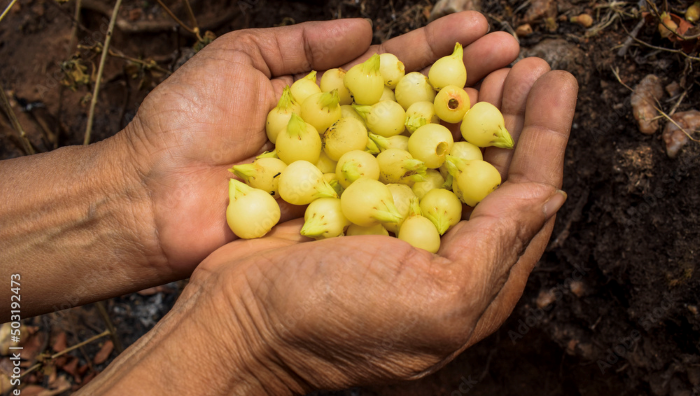Mahua, scientifically known as Madhuca longifolia, is a remarkable tree native to the Indian subcontinent, particularly thriving in the states of Maharashtra and Odisha. Revered for its multiple uses, the Mahua tree holds a special place in the culture, cuisine, and economy of these regions.
A Treasure Trove of Uses
1. The Versatile Flower
The Mahua flower is a true marvel of nature. Sweet and aromatic, its pulp can be used to produce sugar, which is a key ingredient in many traditional Indian recipes. Beyond sugar, the flowers can be transformed into delectable jams, tangy vinegar, and even cakes. These culinary delights not only reflect the ingenuity of local communities but also underscore the flower’s nutritional and economic value.
2. The Nutritious Seeds
Mahua seeds are another prized component of the tree. They are rich in oil, which is often extracted and used for cooking or as an ingredient in traditional medicines and cosmetics. This oil is known for its moisturizing properties, making it a staple in many rural households.
3. Traditional Beverage
Perhaps one of the most unique uses of the Mahua flower is its role in the preparation of an indigenous alcoholic beverage. Fermented Mahua flowers are used to create a drink that is cherished by tribal communities for its distinct flavor and cultural significance.
Cultural and Economic Importance
For generations, the Mahua tree has been a lifeline for many tribal and rural communities in India. Its flowers, seeds, and timber serve as sources of livelihood, while the tree itself plays a vital role in local traditions and rituals. Festivals and celebrations often involve offerings of Mahua flowers, emphasizing their spiritual importance.
A Sustainable Resource
Mahua trees are not only beneficial to humans but also to the environment. Their ability to grow in arid and semi-arid regions makes them an essential part of local ecosystems. The tree’s dense foliage provides shade and prevents soil erosion, while its flowers and fruits serve as a source of food for wildlife.
Challenges and Opportunities
Despite its numerous benefits, the Mahua tree faces challenges such as deforestation, overexploitation, and a lack of awareness about its potential. Efforts to promote sustainable harvesting and cultivation are crucial to preserving this natural treasure. Additionally, initiatives to market Mahua-based products can help enhance livelihoods and showcase the tree’s value to a global audience.
Conclusion
The Mahua tree is much more than just a tree; it is a symbol of resilience, sustainability, and cultural heritage. By celebrating and protecting this natural gift, we not only honor the traditions of Maharashtra and Odisha but also contribute to a more sustainable future. Let us embrace the magic of Mahua and ensure its legacy for generations to come.

